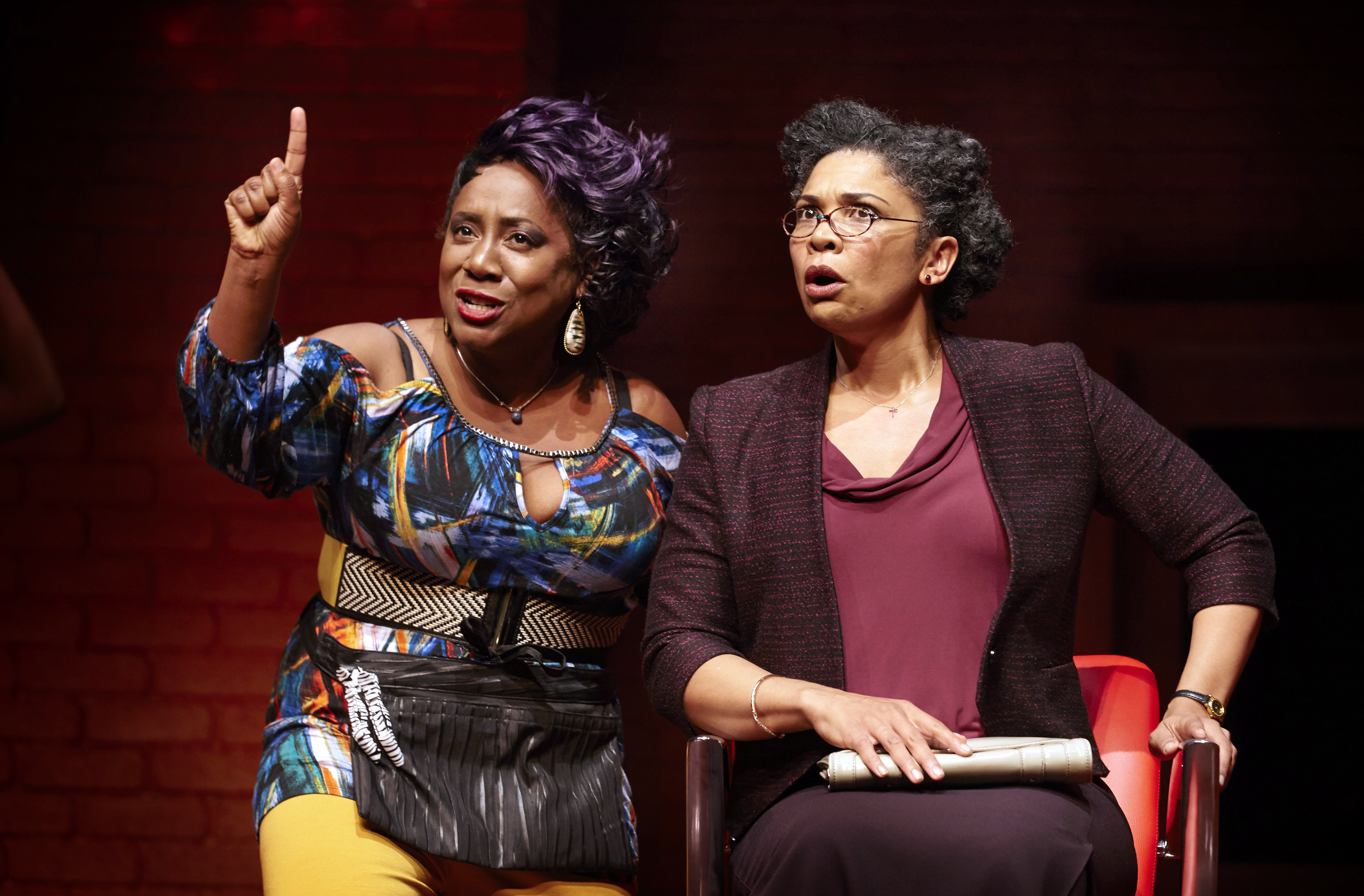“Whatever makes you happy makes you beautiful.”
This is what salon owner Novelette tells her customers in the 2001 play ‘da Kink in My Hair.
Set in a hair studio, this production tells the story of seven women who have unique perspectives on life, love, loss, and everything in between. The studio is a place where these women talk about their experiences and share their joys and sorrows. Audiences see characters from all walks of life finding strength in each other’s stories, and illuminating what it means to be a woman, and a black woman in particular.
Novelette, portrayed by playwright Trey Anthony, acts as a mother figure, offering advice and courage to each of her clients, all the while bringing the sass to keep the stage alive.
This production finds its strength in its relatable content. Heavily character-driven, each woman has her moment to pull the audience into her world, paint a picture of what her life is like, and command the stage to talk about her struggles.
Director Marion J. Caffey does a wonderful job of making the cast responsible for connecting with the audience while creating a diverse range. One moment, the audience is grieving with reeling mother Patsy, played by Tamara Brown, while the next moment they are laughing and cheering on elderly Miss Enid, played by Brenda Phillips, as she talks of lust and love.
A new layer is added in the inclusion of the character Suzy, played by Ottawa native Rae-Anna Maitland. As the only white woman in the cast, her voice as a mother to a mixed-race child makes for a tale that chronicles the experiences of women as a whole, while still highlighting issues surrounding racism. A role not present in the original script, Anthony and Caffey created her to illustrate the relationship between black and white women alike, to weave a thread of familiarity.
The design and sets of this show are deliciously simple, with orange brick walls framing the space and six orange salon chairs making up the backdrop. This sheds clear light on the characters, not flashy set design. The lighting is subtle, shifting from scene to scene in smooth waves that never leave the audience behind. As each woman takes centre stage, the lights narrow in until she is standing in a single beam of light, contributing to the intimacy of each scene.
Of course, there’s the stellar music. Anthony created a musical based on her original work with the help of four composers, blending soul, rhythm and blues, and gospel music. Whether it’s a wistful song of remembrance or a fiery song of desire, the band and voices never fail to keep the audience tapping their toes or wiping their eyes.
Perhaps the strongest element of this play is its utter relevance to the world we live in today. So many issues and themes are explored—everything from sexuality and sexual freedom, to questions of body image and appearance, finds its way onto the stage. Attacks on sexism and racism are blatant, references to the Black Lives Matter movement are evident, homophobia finds a voice, and realities of sexual violence are told in a frightening yet necessary way.
Anthony’s story strives to break down injustices in a sympathetic narration, so audience members can pick out pieces of themselves and learn from the characters.
With a simple set, soulful music, and complex characters, ‘da Kink in My Hair, running until Nov. 5 at the National Arts Centre, scored a home-run for audience members old and young, white and black, male and female alike. Protagonist Novelette leaves us with this advice: “Respect the kink. Love the kink.” Because ladies, it’s alright to let others see you cry, share your story, put yourself first – it’s alright to embrace that kink in your hair!






